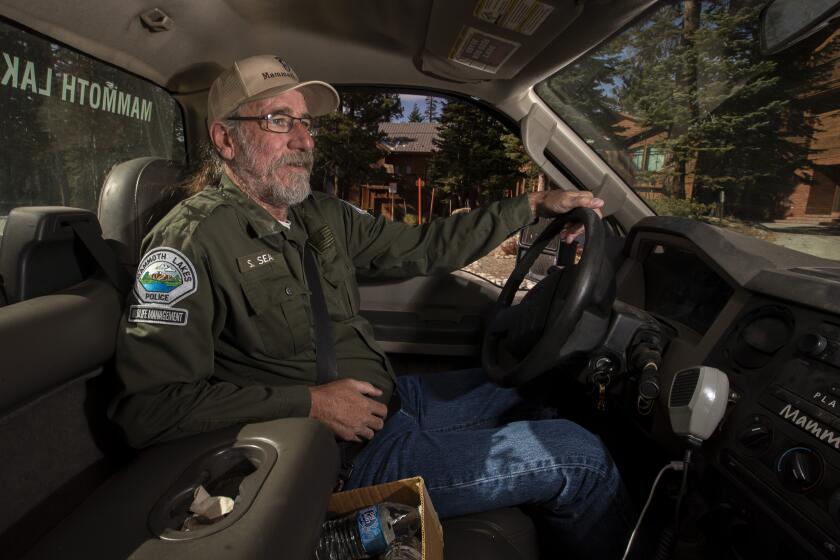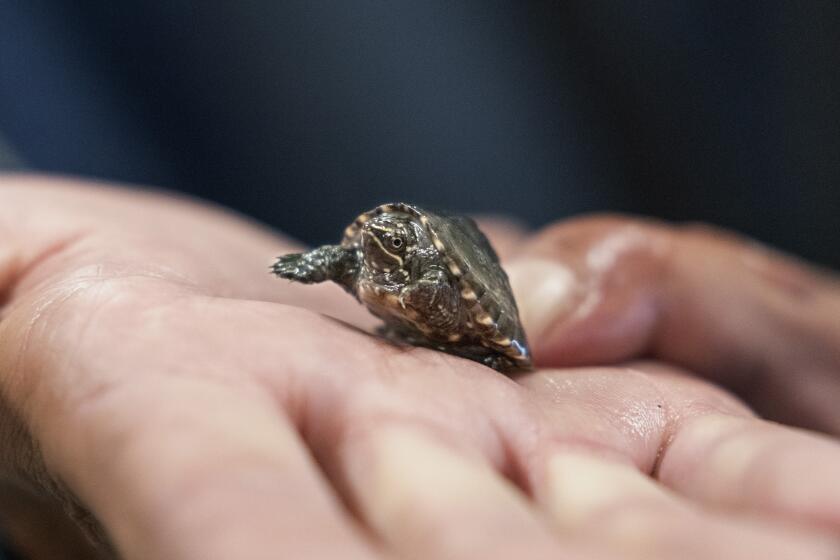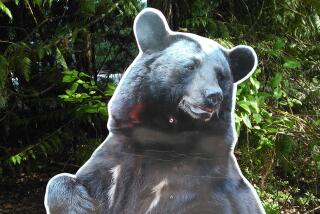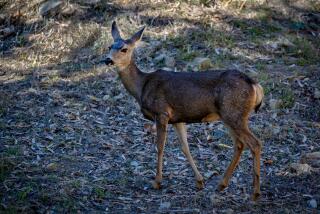From endangered to cuddly to ‘pests’: What ‘The Age of Deer’ says about the human mind
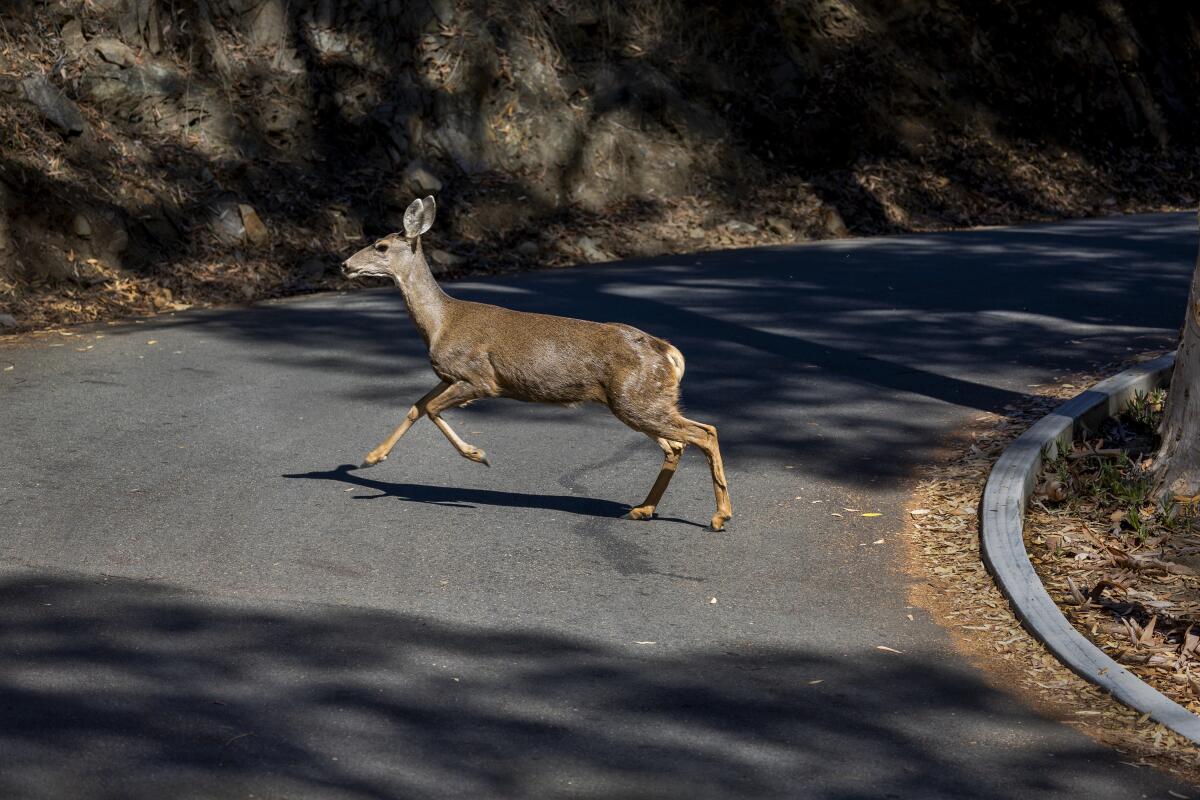
- Share via
Review
The Age of Deer: Trouble and Kinship With Our Wild Neighbors
By Erika Howsare
Catapult: 368 pages, $28
If you buy books linked on our site, The Times may earn a commission from Bookshop.org, whose fees support independent bookstores.
Deer. We see them everywhere. They’re in the woods and on the waysides ; they wander city streets and turn home gardens into their personal smorgasbords. Their ability to adapt makes them ubiquitous, pests perhaps, even as the glimpse of a spotted fawn makes many hearts melt.
In her fascinating new book, “The Age of Deer,” Erika Howsare considers the role deer have played in the creation of an American mythology — and how that mythology nearly led to the animal’s complete disappearance from American land. By 1900, deer had been harvested to near-extinction for their hides and their meat. States including Kansas, Vermont and Ohio had no deer at all. Fewer than 100,000 remained. Today, it’s estimated that 30 million of them live among us — enough to threaten native environments such as Catalina Island, where a controversial eradication plan is under debate.
Steve Searles, a.k.a. the ‘bear whisperer,’ and co-writer Chris Erskine share lessons from ‘What the Bears Know,’ expanding on a 2020 L.A. Times story.
Fluctuations in American deer populations reflect a deeper human story. “What we can say with certainty is this: for thousands of years, people and deer existed together,” Howsare writes. “And after Europeans arrived, deer nearly went extinct. Surely there was a difference not just of action, but of mind. Those deer population graphs track numbers of animals, but they also map human thought.”
Howsare’s map of minds includes her own, charting how each development affects her own attitudes about the animals. The book is not a collection of deer facts so much as a many-stranded conversation that we pick up at various moments, following the author’s shifts in perception as the condition of the species passes from wildness to coexistence, endangerment to overabundance. Rather than an ironclad position to be defended against any evidence to the contrary — so familiar in 2020s America — the interplay between Howsare’s feelings and learnings is a splendid document of intellectual and emotional growth.
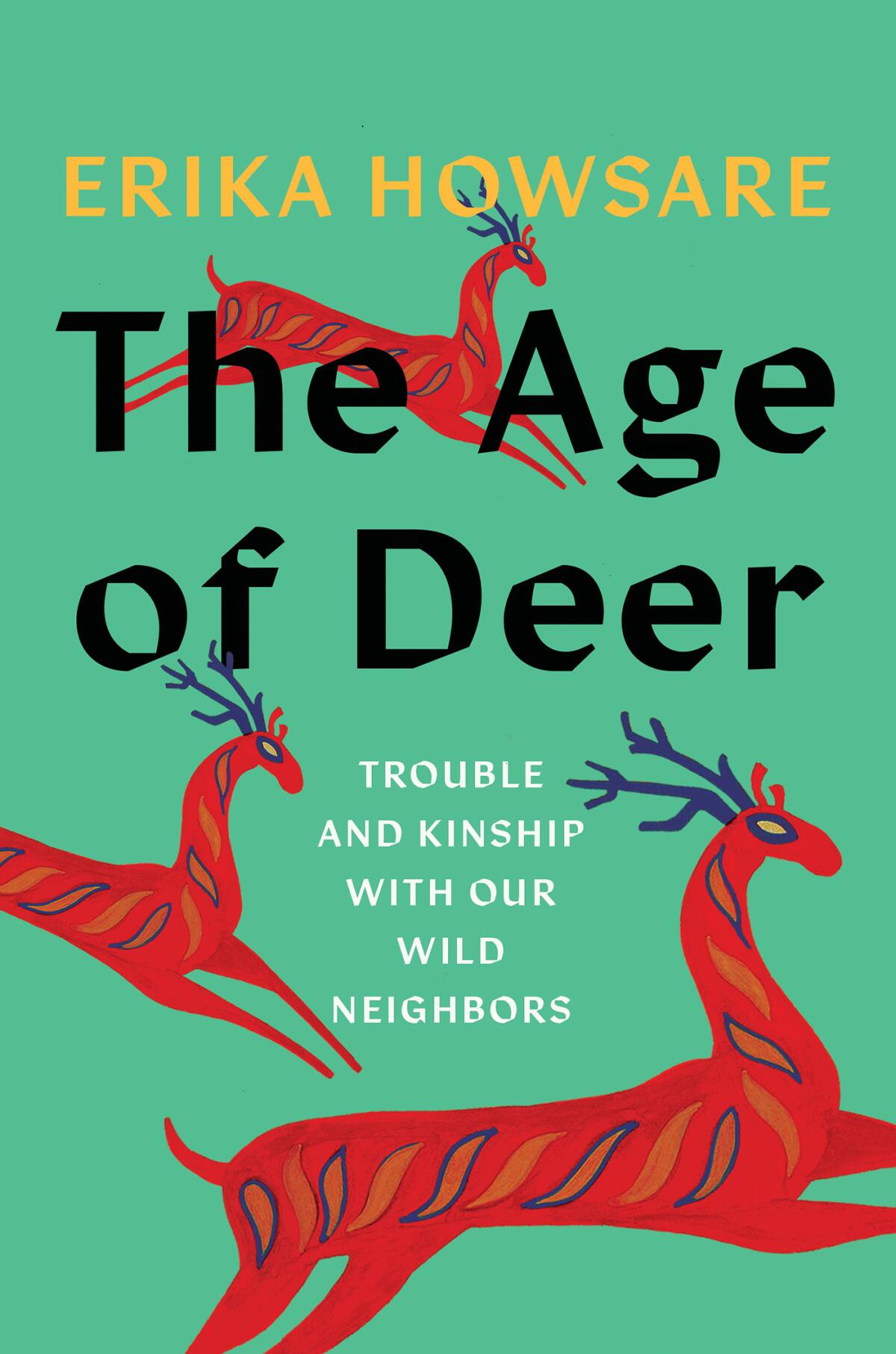
As she demonstrates, it’s impossible to separate deer from American and European notions of a mythical “balance of nature.” In medieval Europe, deer represented wealth: The nobility sequestered swathes of land as deer parks and made poaching a crime. When European settlers arrived in North America, they marveled at the plentiful game. In extolling the land in their reports, embellishments and exaggerations advanced the myth of “unspoiled wilderness,” erasing Indigenous people who lived there.
Howsare argues that what Europeans beheld was the opposite of paradise — in fact “a landscape in crisis.” Even before waves of settlers arrived, explorers had brought with them epidemics that obliterated large numbers of Native Americans whose own forest practices had created spaces for deer, which were essential to their subsistence and culture. Without that husbandry, deer over-multiplied, upending the ecosystem. But settlers thought what they saw was “natural.”
What sent the deer population plummeting in the 18th and 19th centuries was the demand for buckskin, a source of clothing and other products. Turning deer into commodities led to population collapse. The rebound of deer populations is testament to a species Howsare calls “Anthropocene heroes. They are mashup-makers, remixers, shape-shifters, contemporary masters of disguise.” Deer are, in other words, a lot like humans. “What animal could be a more perfect emblem for our own selves? Our precarious, fluctuating state?”
In a climate crisis that feels huge and hopeless, these eight books — essays, fiction, memoir and poetry on the wild — will help you focus on small things
But if deer are great survivors, their familiarity also breeds the kind of contempt we project onto animals we perceive as “dependent.” This shortchanges their enormous power. It makes more sense to see deer as incidental roommates, both delighting and frustrating us with their presence.
Anyone who gardens knows what an impact deer make; they have made it for centuries. “Piers Plowman,” written in the 14th century, complains of “bukkes that brekken down myne hegges” (bucks that break down my hedges). Howsare examines the thriving contemporary industry in deer repellent, which consumers dutifully apply one day only to find uprooted plants the next morning. Is the deer to blame for eating what we find beautiful? Were they not here first?
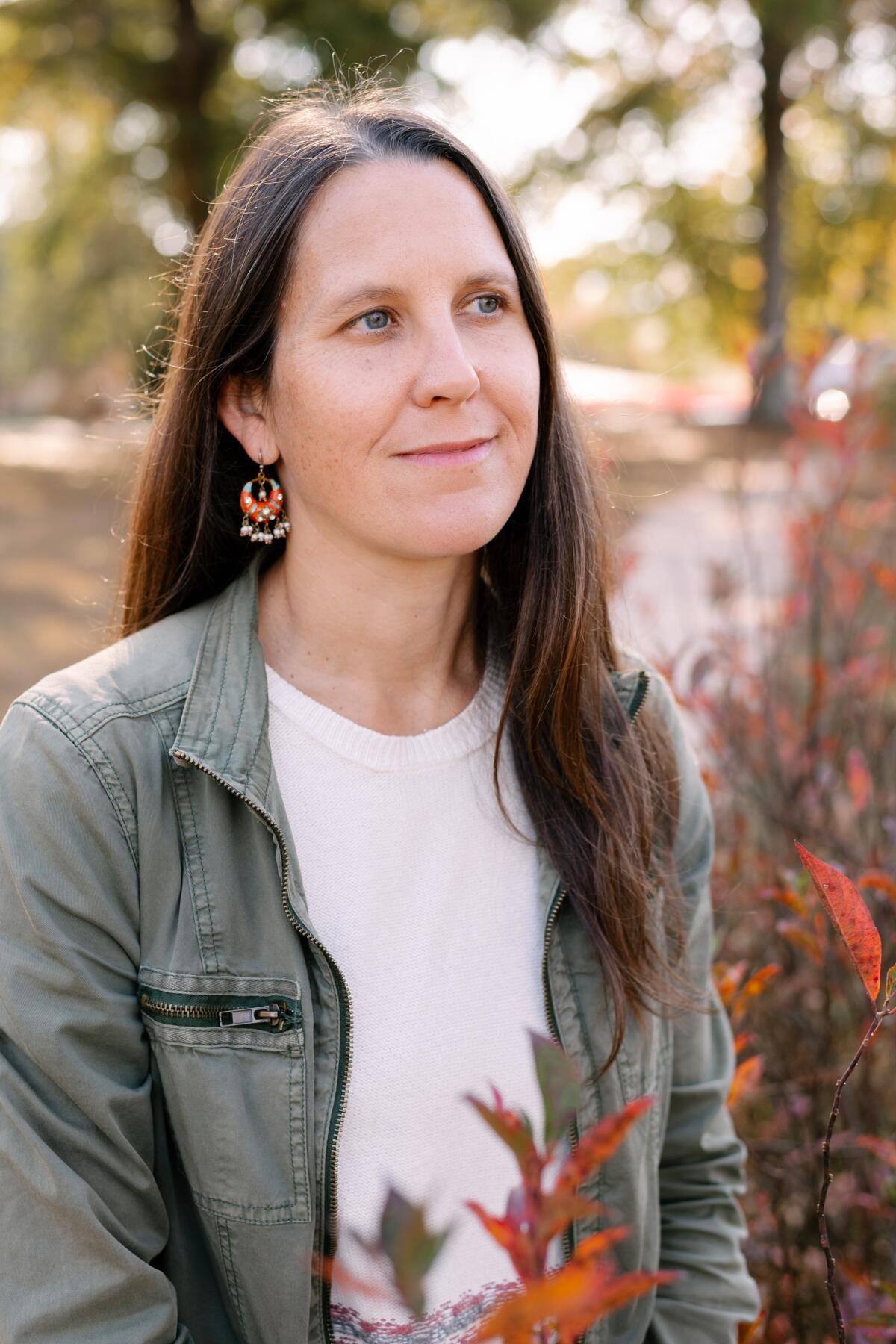
Any driver who has ever hit a deer also knows just how powerful they are. Data shows that in 2021, more than 100,000 California motorists filed insurance claims after hitting animals, the vast majority of them deer. And it’s not just cars: The FAA reports that there have been more than 1,200 deer collisions with civil aircraft between 1990 and 2019. As a consequence, humans have had to adapt not only how we drive but also the ways we construct roads.
Howsare ventures beyond the merely physical encounters, arguing that modern culture is just as entwined with the species as those of the continent’s original inhabitants. Among the fascinating aspects of Howsare’s cultural history is the impact of the Disneyfication of the Felix Salten novel “Bambi.” In the movie, Bambi is the beautiful and innocent natural creature whose enemy is human — the hunters who kill his mother. Cartoon Bambi has had an outsize impact on Americans’ attitudes toward hunting.
Americans who have no problem eating chickens raised in cages and mass-butchered hogs and cattle sometimes perceive hunting as “cruel,” or insist that shooting “defenseless” deer is not a sport. In untangling various arguments about hunting, Howsare makes clear how human concepts of “innocence” or “wilderness” are inseparable from both early mythology and modern gender, class and race hierarchies.
Suzanne Simard’s groundbreaking research inspired Richard Powers’ ‘The Overstory.’ Now she’s published her own memoir, ‘Finding the Mother Tree.’
Fifteen percent of the American population participates in the traditional fall hunting season. Most of them are white males, but gender also extends into choice of quarry — the vast majority of hunted deer are male. Howsare insightfully unpacks this preference as well, proceeding to unwind modern archetypes of the practice — working-class, masculine, solitary. Like the “unspoiled wilderness” of Europeans’ dreams, this too is just a construct. The older, more collaborative methods employed by Indigenous groups were in fact more efficient for harvesting deer meat.
A measure of Howsare’s power as a guide is how it clarified my feelings about deer. That’s not because Howsare simplifies anything. She has no ultimate program for how to regain some elusive “balance” between our two species. She merely asks that we continue to learn from each other. Understanding the ways these heroes of the human age have adapted to change may very well help us survive our own era of overabundance.
Berry writes for a number of publications and tweets @BerryFLW.
More to Read
Sign up for our Book Club newsletter
Get the latest news, events and more from the Los Angeles Times Book Club, and help us get L.A. reading and talking.
You may occasionally receive promotional content from the Los Angeles Times.
